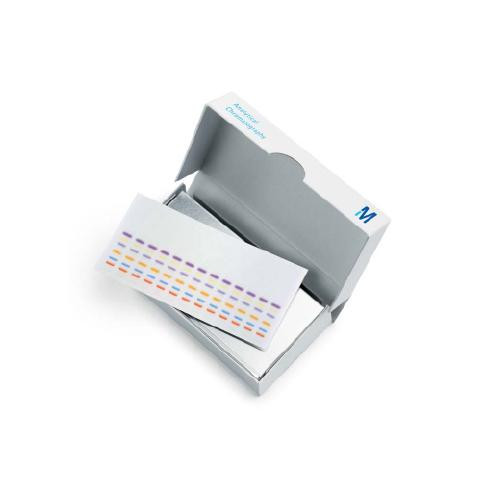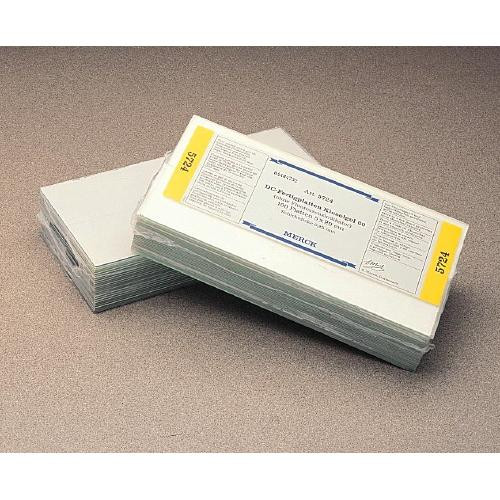For analysis of polar substances The organic sorbent cellulose is particularly suitable for the separation of hydrophilic substances by partition chromatography. EMD Millipore cellulose plates include classical TLC grade or HPTLC plates for demanding high-performance separations: TLC cellulose layers are based on microcrystalline cellulose for standard separations, whereas HPTLC cellulose layers utilize high-purity rod-shaped microcrystalline cellulose resulting in a highly reduced diffusion of analytes for critical high-resolution separations. Cellulose plates are available with or without fluorescent indicator. The fluorescent indicator used is a special fluorescent pigment that is stimulated to intense blue fluorescent emission at long-wave UV light of 366 nm and at short-wave UV light at 254 nm. The special PEI cellulose is a polyethylenimine-modified cellulose, which acts as a strong basic anion exchanger. Due to these properties, it is mainly useful for analysis of substances with exchange-active, ionic groups such as amino acids, peptides and nucleotides or nucleosides. Application of cellulose TLC and HPTLC Typical applications of cellulose include the analysis of amino acids, carbohydrates, phosphates, nucleic acids and nucleic acid derivatives for: Detection of significantly high increases of amino acids in clinical laboratories 2-dimensional separations such as amino acid "fingerprints" Metabolic studies TLC Silica gel 60 F254: EMD Millipore classical silica TLC plates are based on a combination of proven EMD Millipore silica gel 60 and the addition of a unique polymeric binder resulting in a very adherent and hard surface that will not crack or blister and even allow writing with a pensil on the surface without risk to damage the layer. TLC Silica gel 60: EMD Millipore classical silica TLC plates are based on a combination of proven EMD Millipore silica gel 60 and the addition of a unique polymeric binder resulting in a very adherent and hard surface that will not crack or blister and even allow writing with a pensil on the surface without risk to damage the layer. HPTLC Silica gel 60 F254: HPTLC plates deliver fast and quantitative analysis of complex samples for manual or automated use. EMD Millipore's HPTLC silica plates work three times faster than conventional TLC plates – and they're more sensitive. The particle sizes range in HPTLC is between 4-8µm, which creates a smoother surface and a higher separation power than TLC plates. PLC Silica gel 60 F254: PLC plates allow users to separate samples that vary greatly in size – from grams down to milligrams. Available with or without a fluorescence indicator, PLC plates has 1mm thickness. They also use the same proven EMD Millipore silica-binder technology as in analytical TLC plates. To isolate the substance by extraction, users can simply scrape the spot from the layer. TLC Aluminium oxide 60 F254: Aluminiumoxide plates are used to analyze basic and neutral compounds at different pH levels. Depending on the pH range in question, professionals can choose between two kinds of aluminum oxide plates. Under aqueous conditions, basic aluminum oxide plates are best for separating basic compounds, while neutral plates are ideal for separating neutral compounds. Available with or without a fluorescence indicator, our TLC aluminum plates handle a wide variety of applications thanks to neutral and basic aluminum oxides with 60Å and 150Å pore sizes. TLC PEI Cellulose F: The special PEI cellulose is a polyethylenimine-modified cellulose, which acts as a strong basic anion exchanger. Due to these properties, it is mainly useful for analysis of substances with exchange-active, ionic groups such as amino acids, peptides and nucleotides or nucleosides.
- UPC:
- 12352201
- Condition:
- New
- Availability:
- 3 Days
- Weight:
- 1.00 Ounces
- HazmatClass:
- No
- WeightUOM:
- LB
- MPN:
- 1.05714.0001
- Model Number:
- 1205N57















